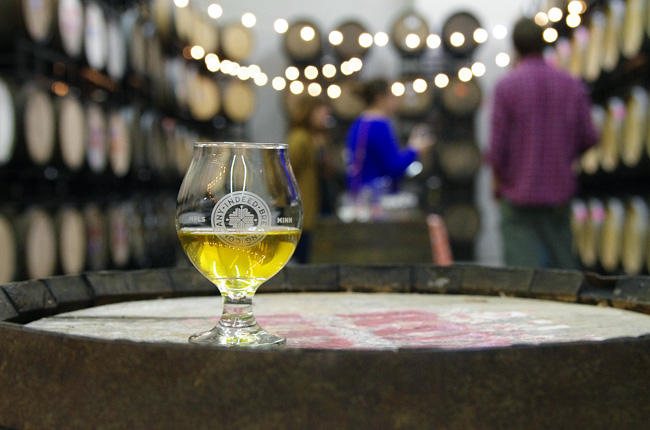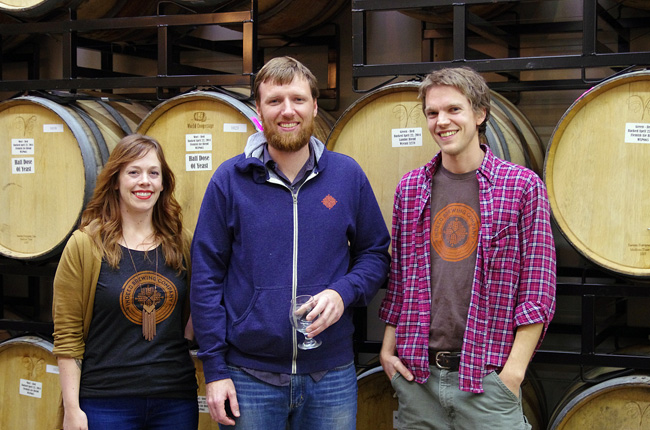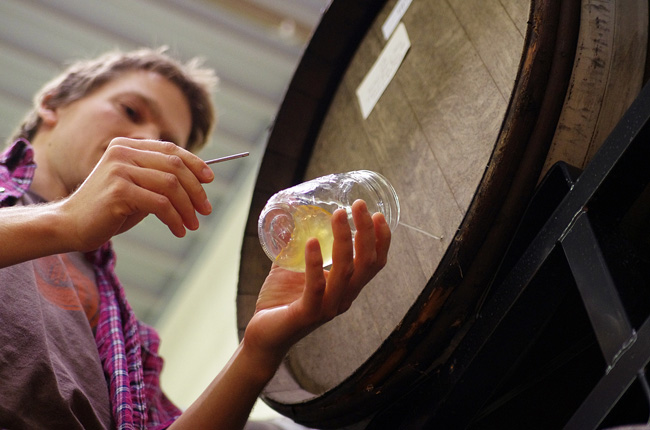
While we’ve all been sipping our Midnight Ryders and dreaming of the Rum King release, Indeed Brewing has been working hard on a new cellaring program focusing on the souring of beers. About a year in the works, the first saison is almost ready for release — and we’re excited about it. With the un-trademarked, yet-to-be-confirmed name Wooden Soul, the fledgling program is an exercise in living beer, managed by the most diligent of brewers.
A large cement chamber hidden in a business park about a mile away from the brewery, the sour facility also houses the ready-to-sell beer Indeed doesn’t have space for at the brewery. The facility is warm and inviting, starkly different from any warehouse, with holiday lights strung from the tops of barrels stacked four high on all sides. The space evokes the spontaneous fermentation happening inside the barrels. It’s intimate and alive, vibrating with the energy of the brewers; palpable oak-scented excitement is in the air.
Having the souring occur offsite keeps the wild yeast strains of the sour beer from contaminating other beers. It was in this space that we met with one of Indeed’s founders, Tom Whisenand, and the brewer responsible for the program, Adam Theis. We tried many of the beers, including the one that is the most ready and will probably be released in a matter of days. On the table in the middle of the room was a spread of three cheeses chosen by the cheese buyer at Surdyk’s to pair with the libations and a plate piled high with thinly sliced pork shoulder encrusted with juniper berries and cracked pepper, surrounded by crusty bread.
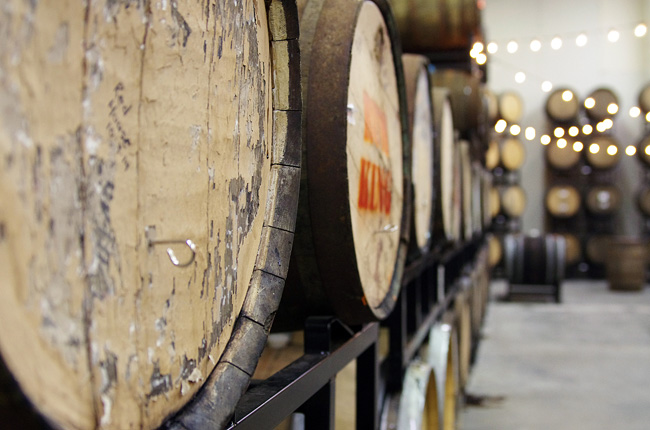
The facility has over 200 barrels, about 60,000 bottles of beer (750 ml, the volume at which they will be sold). As part of this process, the brewers created a library of sorts, systematically combining several yeasts in a variety of permutations to cultivate and explore each combination, discovering what flavors and aromas they created in order to educate future decisions.
As Theis described it: “I’ve never filled a room with these barrels, and all of us were like ‘How do we go about doing this so we can repeat this and know what we’re doing?’ So basically we set up … a 32-barrel experimental place. And we took single strain bretts — there’s 4 different ones, so basically every commercial one, and some that are less commercial that we can get our hands on — and then crossed them.” We tasted several beers from this group to get a sense of how each of the yeasts acts and interacts. However, seven months into the program, most of the beers are still too young.
A “young” sour is exactly that, it tastes unfinished. It is not quite the tangy citrus flavor you would expect, that dances on your tongue, creating the illusion of carbonation or a finish that’s so tart it could be a lemonade-champagne cocktail. They fall flat; they taste thin; and they just aren’t ready yet. Over the next few years, they will change and mature in ways not even Theis can really know, or predict.
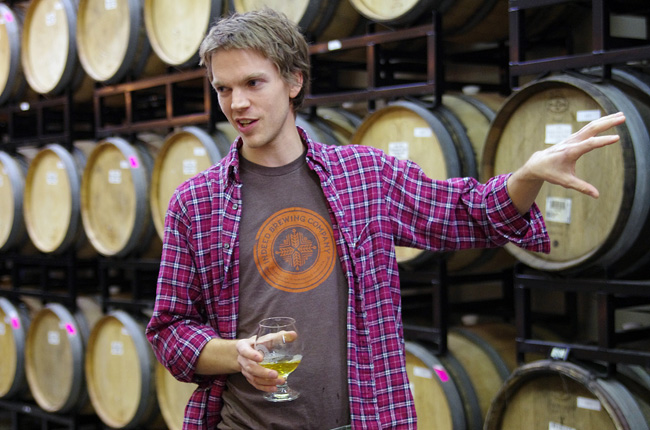
There are several factors in souring that affect the outcome: what kind of liquid is inside — it can be beer that has gone through primary fermentation or wort (unfermented beer) — the wild yeast strain(s), the kind of barrel, what was in the barrel before, and the environment in which the beer is souring. Most of the beers were made with a blonde or red base; about half were made inside white wine barrels from California, and the other half inside red, with oak originating in the United States and Europe. A small group is made from old Rum King barrels or port barrels.
The soon-to-be-released beer is a Brettanomyces saison. Brettanomyces is the wild yeast used in the souring process and saison is “a style of beer so broad in what it can be, so it will be the umbrella for all of these beers,” said Whisenand. It will be available only on tap in the brewery taproom and a select few bars. The brewers hope that in a few years’ time, they will be able to sell some in 750ml bottles, much like Indeed’s other special releases. The rest of the beers will be released as they are ready — if and when. There is no rush, and apart from consumer demand, no real need to release too early. The program, as a labor of love, is a constant process that may not lead to anything. And that’s OK. As Whisenand said, “You can expect about 20 percent loss of stuff, just pouring it out. … There’s a saying that if you’re not throwing away some of your sour beer you’re probably doing something wrong. … But we haven’t thrown any away yet; we must be doing something wrong! We’ll throw some away in the spring just for safety reasons, to say we did.”
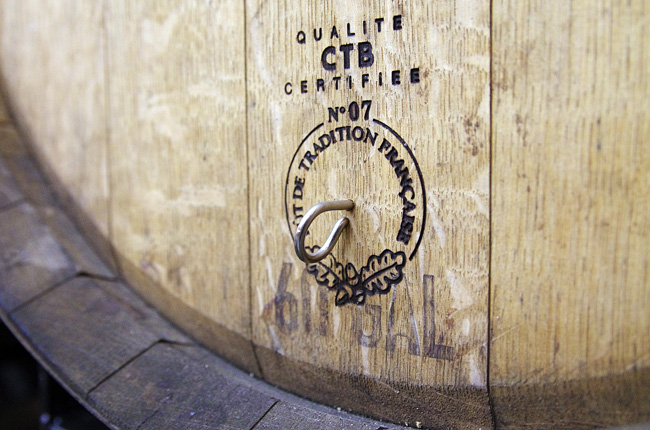
Like a garden that requires frequent tending, the pins in the barrels are removed every few weeks, sometimes more frequently, sometimes less, depending on the barrel. The beers are tasted, and notes are taken. And every time, the flavor changes. Theis described it as “A transformation; you’re putting in something that resembles beer, and what happens when they enter these barrels with these organisms is they transform, they become something else. It’s like a caterpillar that goes in and a butterfly that comes out.” Maybe one week it is more earthy and the next time it is tasted, it has more hay and barnyard flavors. All “off” flavors are fair game, and off they definitely are, some to the point of unpleasant. But the best part is that, as with whiskey, the brewers can curate the flavor combination they find the most appealing, based on what the sours have to offer and how they develop over time.
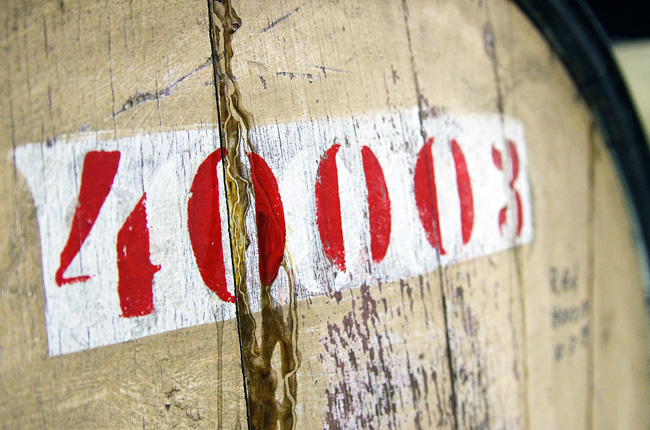
As we sampled the variety of unfinished and not-quite-ready saisons, we snacked on a variety of cheeses because, Whisenand articulated, slice of Swiss in hand, “it fits with this program and what we want to do with these beers. These are meant to be enjoyed with food and savored. These aren’t going to be beers you buy at the store.” The pairing experience is as much a part of the taste as the sourness, and it affects the flavors in surprising ways. With one cheese and beer combination, Theis explains, “They’re both funky so when they’re together it kind of cancels it out … It totally changes the consistency of this beer, it cuts the waxiness.” Some of the sour beer’s flavor profiles are more reminiscent of ripe fruit, while others are more citrus-y with barnyard notes, and a few taste like grassy hay with a deep earthy finish.
“There’s a saying in France about funky cheese where they call it the ‘feet of God’,” Theis explains. “And feet can be nasty, smelly things, but the feet of God, it’s smelly but it came from this amazing thing, so some of these beers are like that. You have characteristics like barnyard or horse blanket that individually or in high concentrations sound disgusting, but in a small amount it adds so much to the intensity and complexity of these beers.” With finished products that might not be ready even in three years, we can expect to see a lot of saison releases and one-offs from Indeed’s cellaring program.
